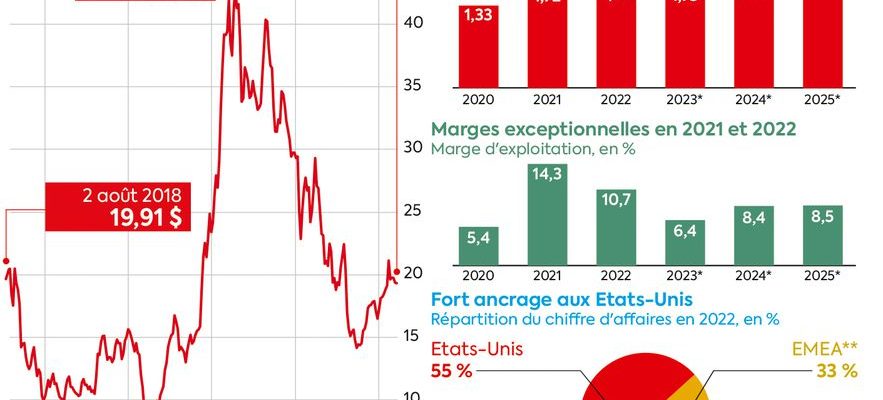The value of tomorrow is realized in partnership with Zonebourse.com
In the world of systems that allow you to listen to music, Sonos enjoys a good reputation. The company has managed to carve out a place for itself in the fairly congested loudspeaker market. It includes consumer electronics players like Sony or Philips, technology giants like Apple, Google and Amazon and historic sound names such as Harman, JBL or Bose. To distinguish himself, the Californian explains at will that he represents the best of three worlds. Without really knowing if the discourse was ground a posteriori, or if this positioning is the fruit of a major project built from its birth in 2002, in Santa Barbara.
Still, Sonos portrays itself as a total player, which has cultivated a dual software and hardware hat from the outset. A bit like Tesla in the automotive world, even if the comparison is bold. The company thus stands out from the competition of digital giants, who especially want to bring their voice assistants into homes, and from that of traditional sound players, who are fishing on networking and interoperability. In summary, Sonos offers products in open architecture with a rather high-end positioning. In the United States, it takes 179 dollars in entry price for the Roam portable speaker and 219 dollars for the flagship speaker, the Sonos One. The Beam soundbar is $449 and its big sister, the Arc, is $899. To build an advanced home sound system, the bill goes up quite quickly.
The Sonos offer has attracted 14 million households worldwide, according to the latest data published by the company, with great loyalty since buyers tend to own several brand products and come back to them when it is time to renew. equipment. The prices are high, but the quality is there. An anecdote shows it well: when the company wanted to go public, investors were moved by the longevity of the products, which they considered incompatible with the old recipe for planned obsolescence, still practiced in part of the technology sector. .
© / Art Press
A huge playground
On the financial side, the company has been profitable for a few years, but with fluctuating performance. In addition, the earnings slopes are skewed by the two “inherited” years of the pandemic, which inflated margins. Last year ended with a turnover of 1.75 billion dollars, for 227 million dollars of Ebitda, that is to say a margin of 13%. The long-term objective is to reach 2.5 billion dollars in sales for 15 to 18% of Ebitda. Sonos believes it has a considerable playing field, since its penetration rate, that is to say the turnover reported to the global annual audio market, is currently limited to 2%. Management emphasizes “sophisticated” households, its core business, and two types of development: “showcase” partnerships, in particular with Ikea (with the Symfonisk range of loudspeakers) or Audi (with sound system of the Q4 e-tron); and more industrial agreements, with connected home or building specialists.
Any investor interested in Sonos must be convinced that the group will indeed be able to gain market share in these segments, to maintain the planned growth trajectory. Because if the current valuation is generous, the price offers an interesting entry point if the promises materialize. To Sonos’ credit, the track record is pretty compelling. Which saved him a disastrous stock market fate like GoPro or Fitbit. The first is worth a fifth of its introductory price, when the second was bought by Google at a discount of more than 50% on its original price.
